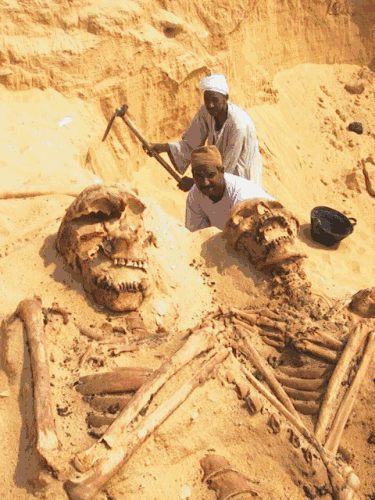Giant Bones: A Big Deal, or Merely Tall Tales?
\
The mystery surrounding reports of “giant skeletons” has always intrigued and fascinated me. Specifically, how it seemed to be a common ocurrence that human-like bone remains, often of giant proportions, were known for popping up everywhere in the mid-to-late 1800s, as featured in reports like these:
In their 1894 report to the secretary of the Smithsonian Institute, Cyrus Thomas and Thomas Powell of the Bureau of Ethnology wrote of several discoveries where large human skeletal remains were found, the first ocurring in Roane County, Tennessee: “Underneath the layer of shells the earth was very dark and appeared to be mixed with vegetable mold to the depth of 1 foot. At the bottom of this, resting on the original surface of the ground, was a very large skeleton lying horizontally at full length. Although very soft, the bones were sufficiently distinct to allow of careful measurement before attempting to remove them. The length from the base of the skull to the bones of the toes was found to be 7 feet 3 inches. It is probable, therefore, that this individual when living was fully 7½ feet high.” And yet another instance, this time in presumed Indian burial mounds at Dunlieth, Illinois: “Near the original surface, 10 or 12 feet from the center, on the lower side, lying at full length on its back, was one of the largest skeletons discovered by the Bureau agents, the length as proved by actual measurement being between 7 and 8 feet. It was clearly traceable, but crumbled to pieces immediately after removal from the hard earth in which it was encased….” Indeed, it seems that the Smithsonian at one time reported oddities like these which they uncovered, especially during the “giant boom” of the late nineteenth century. Still, I can’t help but ask; if these kinds of discoveries were ever at all commonplace, why aren’t skeletons and other anomalies like this found more frequently in modern times… or are they? |

No comments:
Post a Comment